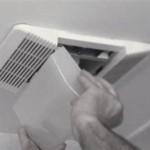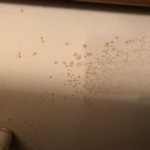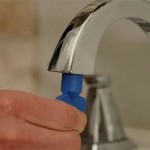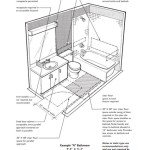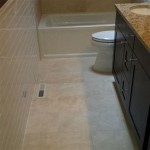How To Get Rid of Bad Smells From Your Bathroom Drain
A persistent, unpleasant odor emanating from a bathroom drain is a common household problem. The source of this foul smell is usually organic matter that has accumulated within the drainpipe, fostering the growth of bacteria and fungi. These microorganisms decompose the trapped debris, releasing gases that can permeate the entire bathroom, creating an unsanitary and uncomfortable environment. Identifying the cause of the smell and implementing appropriate cleaning methods are essential steps in resolving this issue.
Identifying the Source of the Odor
Before attempting any cleaning procedures, it is crucial to pinpoint the exact drain emitting the odor. Bathrooms typically have multiple drains, including the sink drain, shower or bathtub drain, and potentially a floor drain. The intensity of the smell might indicate the primary culprit. However, it is advisable to check all the drains to ensure a comprehensive solution. Common causes of drain odors include hair, soap scum, dead skin cells, and other organic materials that accumulate over time. In addition, the drain's P-trap, a U-shaped pipe designed to trap water and prevent sewer gases from entering the bathroom, might be malfunctioning or dry. A dry P-trap allows sewer gases to escape directly into the room.
Another potential, though less common, source of bathroom drain odors is the ventilation system. Improperly ventilated bathrooms can trap humidity, promoting the growth of mold and mildew around the drain areas. Mold and mildew themselves can contribute to unpleasant smells, exacerbating the problem caused by accumulating debris within the drain. In some cases, the source of the odor might not be the drain itself, but rather an issue with the plumbing vent system, which allows gases to escape through the roof. A blocked or damaged vent pipe can force sewer gases back into the bathroom. If the smell persists even after thorough cleaning, a professional plumber should inspect the venting system.
Effective Cleaning Methods for Bathroom Drains
Once the source of the odor is identified, several cleaning methods can be employed to eliminate the problem. These range from simple home remedies to more aggressive chemical treatments. The choice of method depends on the severity of the clog and the type of material causing the odor. It is always recommended to start with the least aggressive method and gradually increase the intensity as needed.
1. Boiling Water: This is the simplest and often the first approach to try. Pour a kettle or pot of boiling water slowly down the drain. The hot water can help to dissolve soap scum and flush away loose debris. Exercise caution when using boiling water, especially in older plumbing systems or with PVC pipes, as extreme heat can potentially damage the pipes. Repeat the process a few times to ensure thorough cleaning. This method is most effective for minor clogs and build-up.
2. Baking Soda and Vinegar: This is a natural and effective cleaning solution. Pour about one cup of baking soda down the drain, followed by one cup of white vinegar. The mixture will fizz and bubble, which helps to loosen and dissolve organic matter. Let the mixture sit for about 30 minutes, then flush the drain with hot water. This method is suitable for dislodging hair and soap scum. For tougher clogs, repeat the process or let the baking soda and vinegar mixture sit overnight before flushing.
3. Baking Soda, Salt, and Boiling Water: Another variation of the natural remedy involves a combination of baking soda, salt, and boiling water. Pour one cup of baking soda and one-half cup of salt down the drain, followed by a generous amount of boiling water. Let the mixture sit overnight to allow the baking soda and salt to break down the debris. In the morning, flush the drain with hot water. This method is particularly effective for deodorizing the drain and removing lingering odors. The salt acts as an abrasive, helping to scrub the inside of the pipe.
4. Plunger: A plunger can be used to create suction and dislodge clogs. Ensure there is enough water in the sink or tub to cover the cup of the plunger. Create a tight seal around the drain opening and plunge vigorously up and down for several minutes. Remove the plunger to see if the water drains freely. Repeat the process if necessary. This method is most effective for clogs that are relatively close to the drain opening.
5. Drain Snake or Wire Hook: A drain snake, also known as a plumbing snake, is a flexible tool designed to reach deep into the drainpipe and retrieve clogs. Insert the snake into the drain opening and rotate it to break up or grab onto the debris. Carefully pull the snake out, removing any hair, soap scum, or other materials that are attached. A wire hook, such as a straightened coat hanger, can also be used to retrieve surface clogs, but it is less effective for reaching deeper blockages. Exercise caution when using a drain snake to avoid damaging the pipes.
6. Enzyme Drain Cleaners: Enzyme drain cleaners contain enzymes that break down organic matter, such as hair, soap scum, and grease. These cleaners are generally considered safer for pipes than chemical drain cleaners. Follow the instructions on the product label and allow the enzymes to work for the recommended time before flushing the drain with water. Enzyme cleaners are best used for preventing clogs and maintaining drain health.
7. Chemical Drain Cleaners: Chemical drain cleaners are a more aggressive option for clearing severe clogs. These cleaners contain harsh chemicals that can dissolve hair, grease, and other debris. However, they can also be corrosive and potentially damage pipes, especially older pipes made of metal or PVC. Always wear gloves and eye protection when using chemical drain cleaners, and follow the instructions on the product label carefully. Avoid using chemical drain cleaners frequently, as they can weaken the pipes over time. If natural methods and drain snakes are ineffective, consider contacting a professional plumber instead of relying solely on chemical drain cleaners.
Preventing Future Drain Odors
Preventing future drain odors requires proactive measures to minimize the build-up of organic matter in the drainpipe. Implementing regular maintenance habits can significantly reduce the likelihood of recurring odors and keeps the plumbing system healthy.
1. Strainers and Drain Screens: Install strainers or drain screens over all drain openings to catch hair, soap scum, and other debris before they enter the drainpipe. Clean the strainers regularly to prevent them from becoming clogged and overflowing. This simple step can significantly reduce the amount of organic matter that accumulates in the drain.
2. Regular Flushing: Flush drains with hot water regularly, especially after using oily or greasy products. This helps to dissolve soap scum and flush away any loose debris that may be accumulating in the pipe. A weekly flush with hot water can go a long way in preventing clogs and odors.
3. Avoid Pouring Grease Down the Drain: Never pour grease or oil down the drain, as it solidifies and sticks to the inside of the pipe, creating a breeding ground for bacteria and foul odors. Dispose of grease in a container and discard it properly. Even small amounts of grease can contribute to significant build-up over time.
4. Scheduled Baking Soda and Vinegar Treatments: Perform regular baking soda and vinegar treatments to keep the drain clean and fresh. A monthly treatment can help to prevent the build-up of organic matter and maintain a healthy drain environment. This proactive approach can significantly reduce the likelihood of unpleasant odors emerging from the drain.
5. Check the P-Trap: Periodically check the P-trap to ensure it is functioning correctly. If the bathroom has been unused for an extended period, the water in the P-trap may evaporate, allowing sewer gases to enter the room. Pour water down the drain to refill the P-trap and prevent the escape of gases. If the P-trap appears damaged or improperly installed, consult a professional plumber.
6. Proper Ventilation: Ensure the bathroom is properly ventilated to prevent the growth of mold and mildew. Use the exhaust fan during and after showers or baths to remove excess moisture. Open windows to allow fresh air to circulate. Consider using a dehumidifier if humidity levels are consistently high. Preventing mold and mildew growth will not only improve the air quality in the bathroom but also help to eliminate potential sources of unpleasant odors.
7. Professional Drain Cleaning: Schedule professional drain cleaning services periodically, especially if you experience recurring drain problems or persistent odors. Professional plumbers have specialized equipment and expertise to thoroughly clean the drainpipes and identify any underlying plumbing issues. They can also provide recommendations for maintaining a healthy plumbing system.

How To Clean A Stinky Sink Drain By Home Repair Tutor

How To Clean A Stinky Sink Drain Home Repair Tutor
:max_bytes(150000):strip_icc()/__opt__aboutcom__coeus__resources__content_migration__mnn__images__2018__08__sink_drain-351af8e441034f319fe07f00c091d8b6.jpg?strip=all)
How To Clean A Smelly Drain Naturally
My Bathroom Smells Bad But Only When Its Hot Outside It Also Will Slightly Go Away I Run The Sink And Toilet Bathtub Any Thoughts On What Is

How To Get Rid Of Sewage Smell In Your Bathroom Bond Cleaning Adelaide

How To Clean Smelly Drains Living By Homeserve

How To Clean Stinky Drains Liquid Plumr

Two Easy Ways To Fix A Smelly Shower Drain I Rick S Plumbing
What To Do When You Notice A Sewer Smell In Bathroom Spaces Howstuffworks

Unused Bathroom Smells Like A Sewer Causes And Solutions
Related Posts
